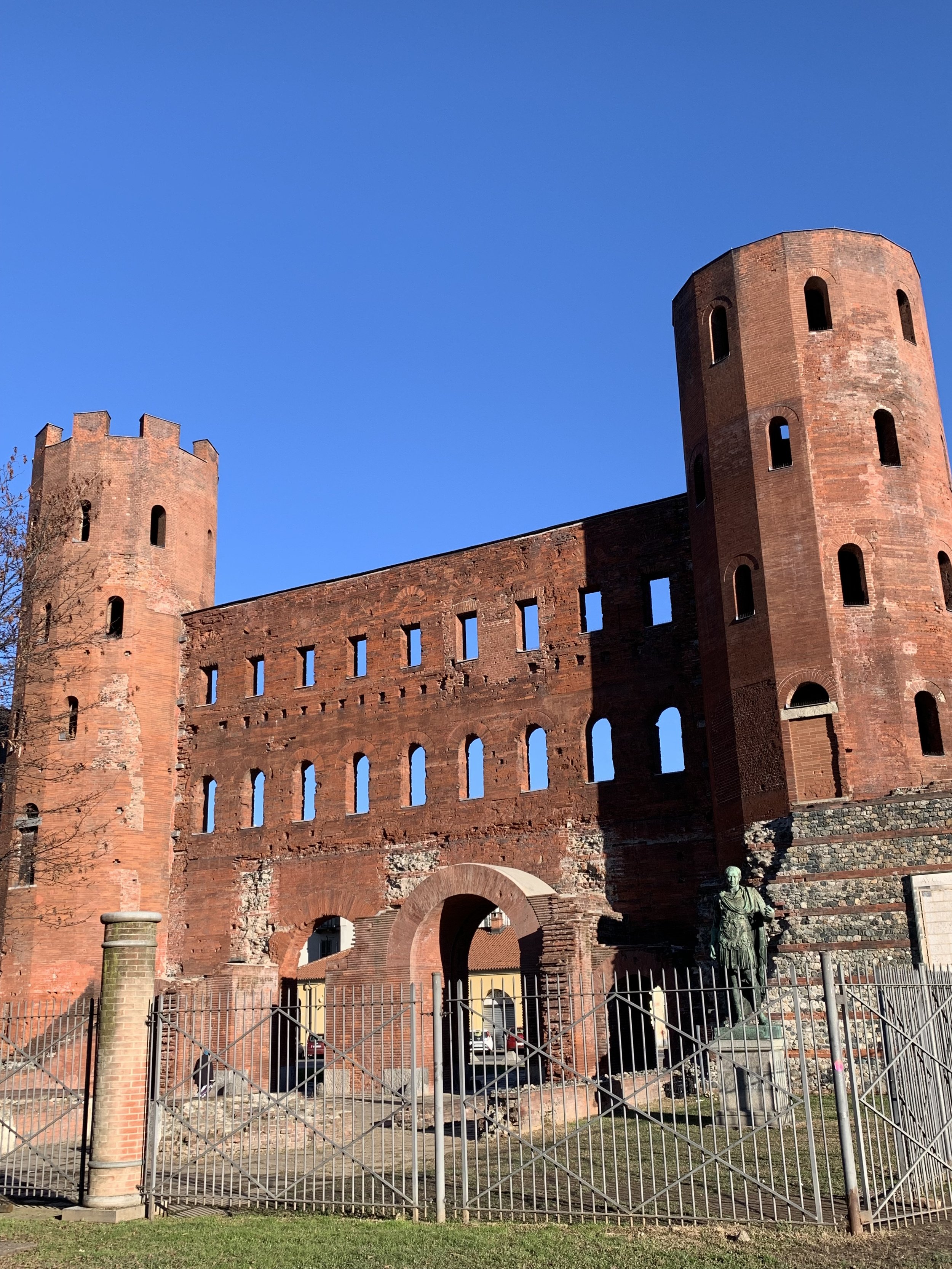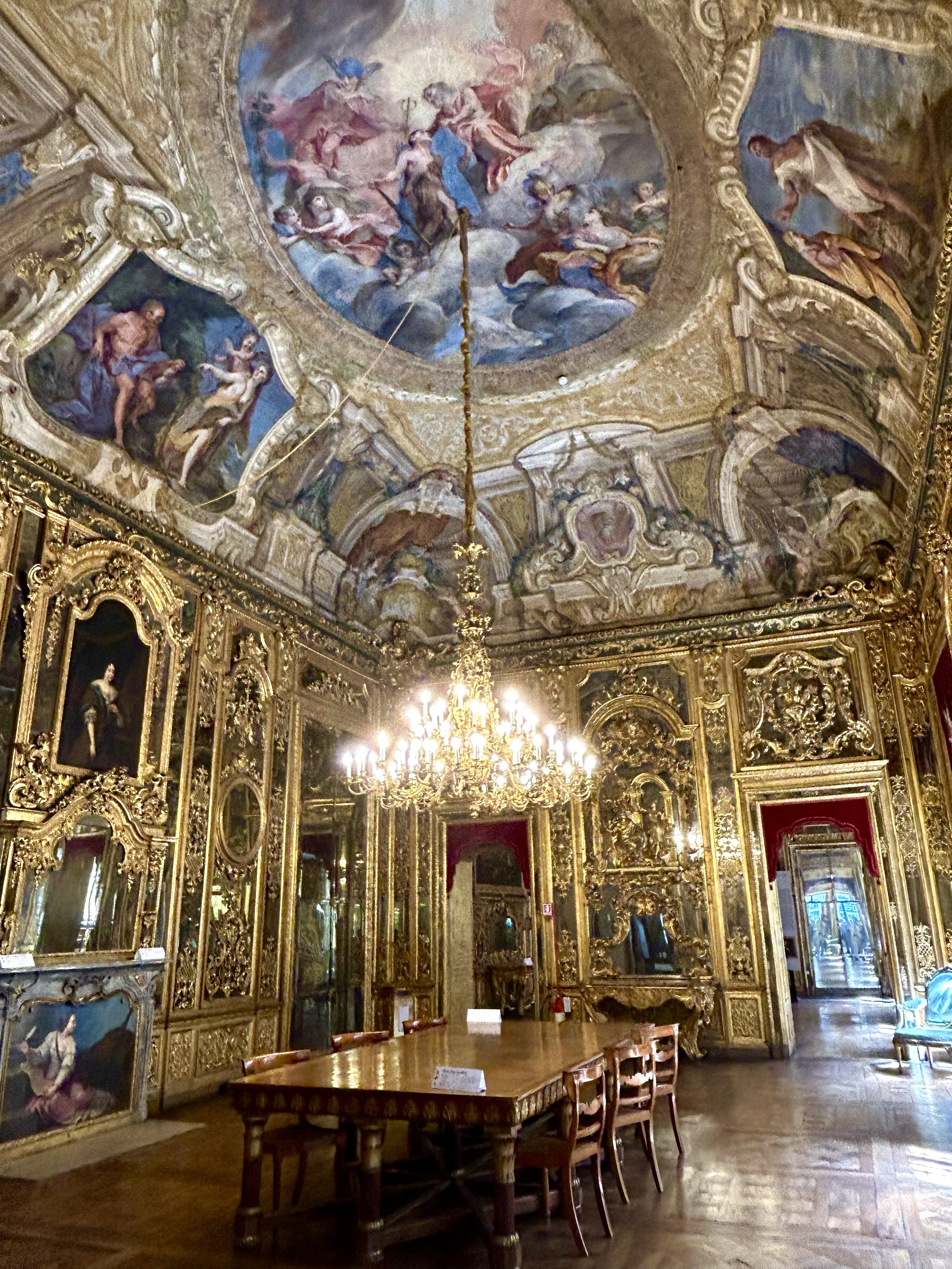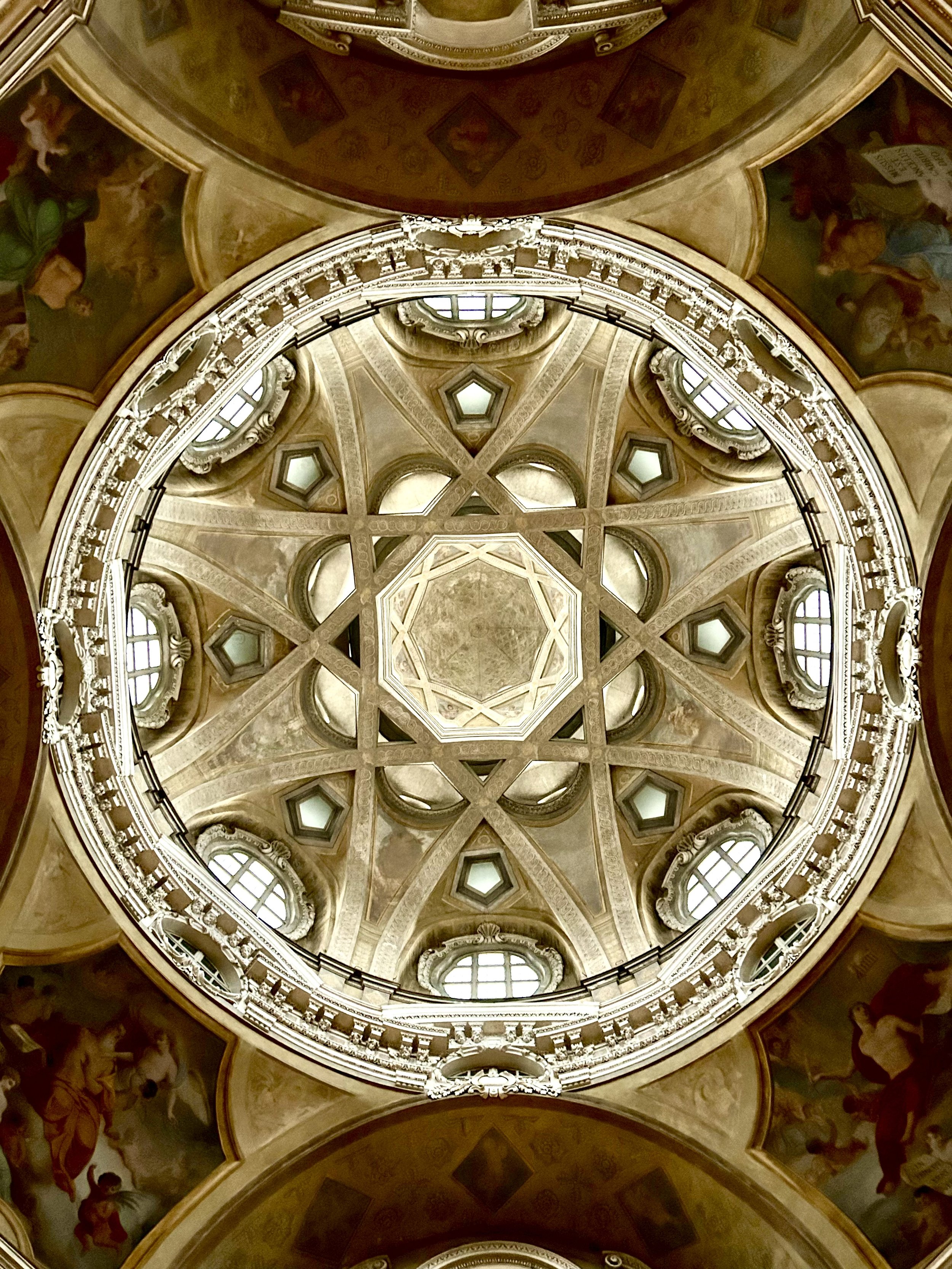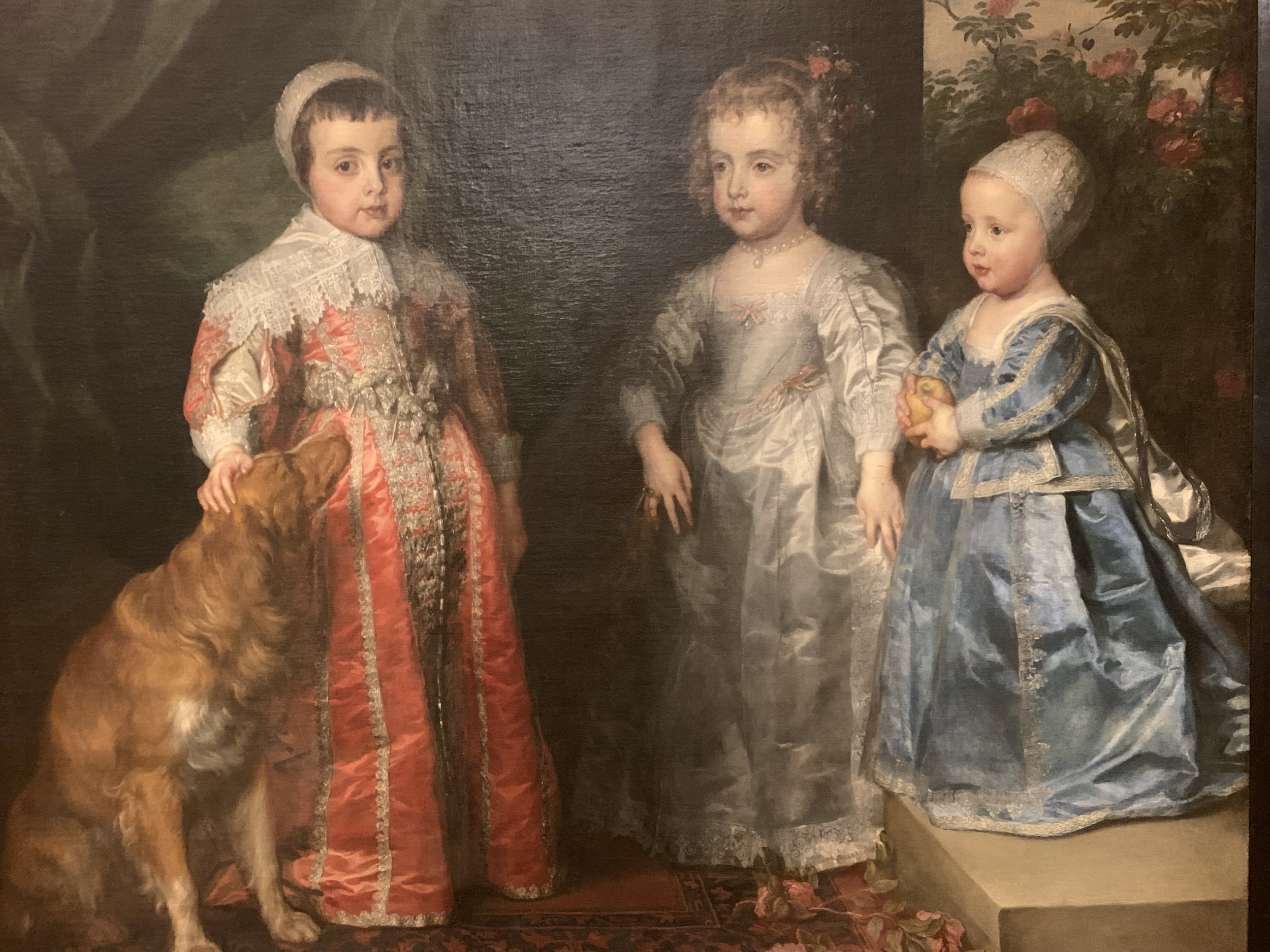Nobility & Diplomacy: Turin & The House of Savoy
Date - Monday 9 - Saturday 14 March 2026
Lecturer - James Hill
Location - Turin Italy
Price - £2535 per person (2 sharing a room)
The rise of the House of Savoy can be traced through the development of the city of Turin and the geopolitical movements of Europe and its dominant royal dynasties from the sixteenth century onwards. Set in Piedmont garlanded by the Alps between France and the Italian peninsula, Turin is a city of stately beauty. Our visit is an opportunity to amble its wide arcaded streets and spacious piazzas and admire the sumptuous palaces and former royal hunting lodges the Savoy dynasty built and indeed embellished with some of the finest yet still largely unknown collections of fine and decorative arts in Europe.
-
Visit one of Italy’s most elegant cities & former royal capitals
Combine wonderful architecture, fine art & excellent local food & wine
Masterpieces by the architects Guarini & Juvarra in baroque, rococo & neo-classical magnificence
Superb collections of paintings in three galleries & visit the iconic Lingotto
See the three finest of the newly restored eighteenth century royal hunting villas built in Turin’s outskirts
Well-appointed & comfortable 4* hotel located in the heart of the city
The rise of the House of Savoy can be traced through the development of the city of Turin and the geopolitical movements of Europe and its dominant royal dynasties from the sixteenth century onwards. Set in Piedmont garlanded by the Alps between France and the Italian peninsula, the late medieval Duchy of Savoy transferred its capital from Chambery to Turin in 1563 as the dynasty became increasingly connected to the Habsburgs and Bourbons. As a regular member of Europe’s anti-French coalition, marriage, diplomacy and conflict lifted Savoy’s stock during the War of the Spanish Succession (1701 – 1714) after which its ducal capital metamorphosed into a royal one as the capital of the newly established Kingdom of Sardinia-Piedmont in 1720. In the nineteenth century, the Savoy became Italy’s first monarchs, Turin its first capital from 1861 and succeeded by Rome in 1870. They remained Kings of Italy until 1946.
Turin itself is a city of striking beauty. Its historic centre, built on an ancient Roman template, is laid out as a series of wide streets and elegant piazzas, most of which have ordered arcades to protect from all weathers. Between 1650 and 1740 the dynasty and city were amply served by two of the finest architects of the time: Guarino Guarini who worked in the baroque style, and his more restrained classical successor, Filippo Juvarra. These two men, some of the greatest Italian architects of their generation, are the main creative forces we shall encounter as we move through city streets and Turin’s immediate hinterland exploring the city’s sumptuous royal palaces, hunting villas and their collections.
Piedmont’s fertile valleys watered by fresh Alpine streams mean that the food and especially the wine are most renowned. Allied to this was, and is, a reputation for dignified civility. It was to Turin, set picturesquely on the banks of the River Po, that many a Grand Tourist came to learn courtly manners in the city’s academies, before launching themselves upon the wider Italian scene in Venice, Rome and Naples. These are just some of our themes during our week in March.
We shall be based at the comfortable 4* Grand Hotel Sitea, ideally placed in the city centre. It offers easy access on foot to all the city’s buildings and collections of note and is set in the midst of Turin’s sophisticated shopping area.
-
Day 1: Monday 9 March – We fly from London Gatwick South Terminal on BA2596 at 3.55 pm arriving at Turin Airport at 6.45 pm. We transfer the short distance directly to Turin and our hotel, the 4* Grand Hotel Sitea. Soon after our arrival, we have our first dinner in our hotel – wine, water and coffee are included with all group lunches and dinners.
Day 2: Tuesday 10 March – We begin with an introductory walk through the historic heart of the city. Turin was founded in 28 BC by the Emperor Augustus and the city’s grid-like street system is marked by one of the main gates into Roman Turin, the very well intact Porta Palatina. We shall visit Turin’s renaissance Cathedral,a delightful building of 1491 by the Tuscan architect, Meo del Capriono. Attached to it is the famous Chapel of the Holy Shroud, an iconic work by architect and polymath Guarino Guarini (1624 – 1683) the interior of which we shall see on Thursday morning. Nearby is the royal church of San Lorenzo, also by Guarini, and dating from 1667 which we shall also visit. Following a group lunch, we return to Piazza Castello to visit Palazzo Madama, built for two seventeenth century female regents. Today, it is a museum with an engaging collection of paintings and decorative arts from Turin and wider Piedmont. The oldest parts of the building incorporate both ancient Roman and later medieval structures, while in the eighteenth century a stunning facade and new ceremonial staircase was added to the palazzo by Filippo Juvarra (1678 – 1736) in 1718 - 1721. Following our visit and first day in Turin, the evening will be free.
Day 3: Wednesday 11 March – Today we travel to the southern suburbs to visit two very different buildings, both bold in their respective designs. We begin at the striking hunting villa built for the Savoy at Stupinigi, known as the Palazzina di Caccia. Built for Victor Amadeo II in 1729 by Juvarra, it is an exquisite ensemble that blends unusual architectural forms with fine frescoes, stucco ornaments and some furniture. Its restoration is on-going, and we will visit just a part of this vast palace. We drive partially back into town to visit a building no less interesting but from a more modern era. The Lingotto was built in 1923 for the FIAT motor company and designed in a way so that the cars were assembled up through the five floors and tested on a curved test track on the roof. Manufacturing stopped in 1982 and today Renzo Piano has requalified the building into a polyfunctional centre for education, shopping and the arts. We shall dine on the roof in one of Turin’s best restaurants and in the afternoon visit the Gianni and Marella Agnelli Collection bequeathed to the city by one of Italy’s greatest industrial scions displaying works by Canaletto, Canova, Renoir, Manet, Balla and Modigliani. We return to the centre of town and our hotel after which the evening will be free.
Day 4: Thursday 12 March – Our half-day of activities focuses on the Palazzo Reale. Much of the piano nobile is decorated under the influence of Marie Christine of Savoy, sister of Louis XIII of France. The interiors date from the seventeenth to the nineteenth centuries in lively baroque and neoclassical styles and contain fine furniture and tapestries. Our visit also allows to visit the interior of the Chapel of the Holy Shroud. After a coffee break, our final visit of the day will focus on the renowned paintings collection of the Galleria Sabauda housed within a wing of the palazzo. The collection is undoubtedly one of the unknown gems amongst Italy’s art galleries. It is especially rich in Flemish, Dutch and Northern Italian works as these have come from the holdings of Prince Eugene of Savoy. There are also some stunning paintings by Mantegna, Rubens, Van Dyck, Bellotto and Batoni, amongst many others. The group will be free from lunchtime onwards, but there is plenty of interest within easy reach. For example, there is the recently reorganised Egyptian Museum, considered the finest collection outside of Egypt. The evening will be free.
Day 5: Friday 13 March – Today we drive to the hilltop Basilica of La Superga. Built between 1717 and 1731 as a thanksgiving for Turin’s delivery from a French invasion during the Wars of the Spanish Succession, it is Juvarra’s finest work and offers extraordinary views over the plain around Turin towards the nearby Alps. Our visit includes a visit to the Savoy Royal Tombs. We travel by coach back into the city centre and there will be time for an early lunch (not included) in the sweeping Piazza Vittoria Veneto. In the afternoon, we drive just beyond the River Po to visit Villa della Regina, a miniature masterpiece set within a perfectly restored formal garden, all inspired by Versailles. Late afternoon there will be some free time and in the evening we have our final dinner in an excellent local restaurant.
Day 6: Saturday 14 March – On our final day, we drive to the northern outskirts of Turin to the village of Venaria Reale to visit the finest of all the Savoy villas and palaces; the splendidly restored Reggia di Venaria. This spectacular country palace and royal hunting lodge (never completed) was once the pride and joy of the Savoy dynasty and reflected their ambitions as dukes and kings. We shall visit the interiors and elements of the grounds during our morning visit. We end with a final, festive group lunch next to the palace after which we drive the short distance to Turin Airport for an early evening departure BA2597 at 6 pm which is scheduled to arrive at London Gatwick Airport at 6.55 pm.
-
Price £2535 per person (2 sharing a room) No Flights £2360pp Deposit £395pp
Single Supplement £275 (Double for Sole Use, Classic Room)
Room Upgrades On requestHotel 5 nights with breakfast at the 4* Grand Hotel Sitea (Classic Room)
Upgrade to Junior Suite - available on request
Flights British Airways
Outward: BA2596 Depart London Gatwick 1555 arrive Turin 1845
Return: BA2597 Depart Turin 1800 arrive London Gatwick 1855
Price includes 2 dinners & 3 lunches with wine, water & coffee, all local transfers, entry fees & gratuities, services of James Hill











